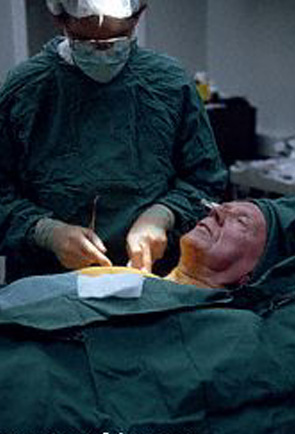![]()

The Pacemaker -- Helping millions of people lead normal, healthy lives! (Corbis)
The first pacemaker was developed in 1950. It was large (about 30 cm long, and several centimetres high and wide), the pulses were generated by vacuum tubes and the entire unit was powered by 60 Hz household current. Its size meant that it wasn't of immediate practical use but with the advent of transistors and reliable batteries, the package grew smaller until a pacemaker was successfully implanted in the chest of a Swedish man in 1957. They have since become a common medical tool.
NRC -- New Improvements to the NRC Pacemaker
Pacemakers --Photos and descriptions of some early Pacemakers
Other sites for information on the Pacemaker:
Canadian Medical Hall of Fame -- Dr. Wilfred Gordon Bigelow